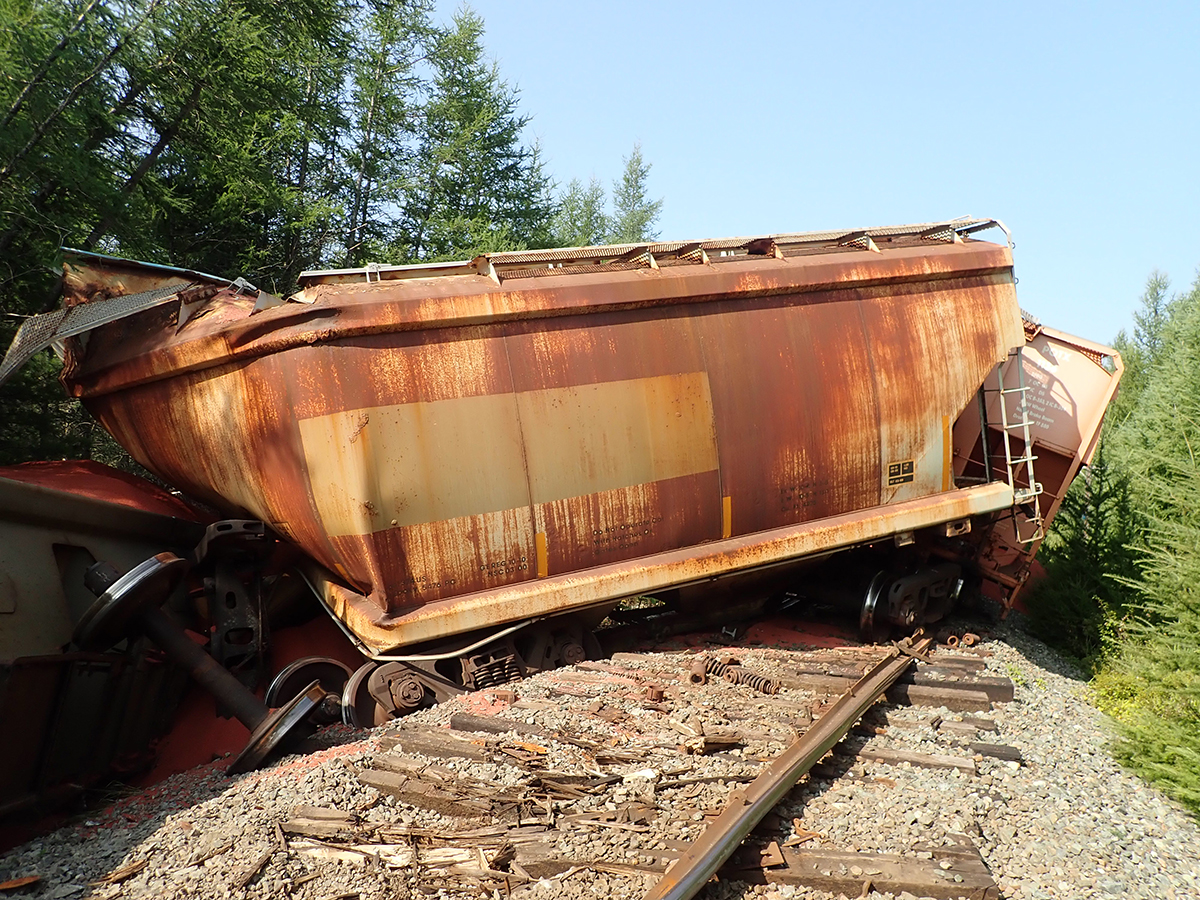Main-track train derailment
Canadian National Railway Company
Train B73041-15
Mile 18.9, Napadogan Subdivision
Pangburn Station, New Brunswick
The occurrence
On , at approximately 1300 Atlantic Daylight Time, Canadian National Railway Company train B73041-15 was travelling eastward at 39 mph on the Napadogan Subdivision when it derailed 30 hopper cars loaded with potash at around Mile 18.9 near Pangburn Station, New Brunswick. As a result of the derailment, 27 of the 30 cars were breached, releasing most of their product. There were no dangerous goods involved and no fire. No one was injured.
Media materials
News releases
TSB releases investigation report into 2021 freight train derailment near Moncton, New Brunswick
Read the news release
Deployment notice
TSB deployed a team to the site of a train derailment near Moncton, N.B.
Dartmouth, Nova Scotia, 23 August 2021 — The Transportation Safety Board of Canada (TSB) deployed a team of investigators near Moncton, New Brunswick on 22 August 2021, following a Canadian National Railway (CN) train derailment on August 21. The TSB is gathering information and assessing the occurrence.
Investigation information
Download high-resolution photos from the TSB Flickr page.
Class of investigation
This is a class 3 investigation. These investigations analyze a small number of safety issues, and may result in recommendations. Class 3 investigations are generally completed within 450 days. For more information, see the Policy on Occurrence Classification.
TSB investigation process
There are 3 phases to a TSB investigation
- Field phase: a team of investigators examines the occurrence site and wreckage, interviews witnesses and collects pertinent information.
- Examination and analysis phase: the TSB reviews pertinent records, tests components of the wreckage in the lab, determines the sequence of events and identifies safety deficiencies. When safety deficiencies are suspected or confirmed, the TSB advises the appropriate authority without waiting until publication of the final report.
- Report phase: a confidential draft report is approved by the Board and sent to persons and corporations who are directly concerned by the report. They then have the opportunity to dispute or correct information they believe to be incorrect. The Board considers all representations before approving the final report, which is subsequently released to the public.
For more information, see our Investigation process page.
The TSB is an independent agency that investigates air, marine, pipeline, and rail transportation occurrences. Its sole aim is the advancement of transportation safety. It is not the function of the Board to assign fault or determine civil or criminal liability.
